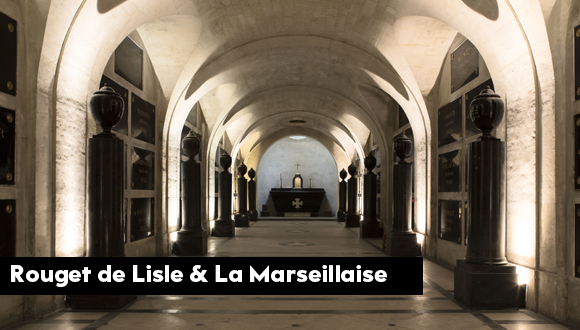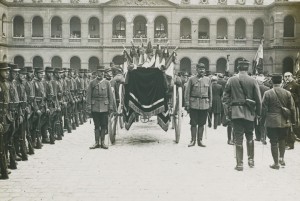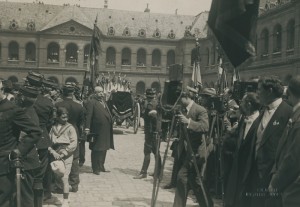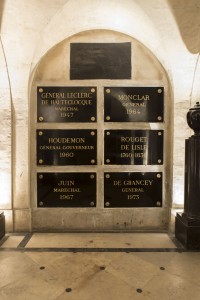Translation de cendres
Although translations differ from burials, they have similar aspects. During a translation, the body of the defunct buried in a cemetery is exhumed and the remains also referred to in French as “ashes” are transferred to a different resting place. Just as for burials, translations are a ceremony for honouring the life of the defunct. However, as translations are generally prepared for long in advance, they can easily be associated with symbolic and political meanings. This specific ceremony was introduced during the French Consulate, specifically with the translation of the remains of Turenne (1611-1675) to the Hôtel national des Invalides in 1800. During the French First Empire, Napoleon I requested the translation of Vauban’s heart (1633-1707) to the Dôme of the Invalides. In 1840, King Louis-Philippe I did likewise with the remains of Napoleon I. During the ceremonies that took place for these translations, pensioners residing in the Hôtel national des Invalides fulfilled their role as ceremonial guards. The translation of the remains of Rouget de Lisle in 1915 took place without any religious ceremony, but among an impressive military deployment. The primary objectives of this translation were both symbolic and patriotic, and the address pronounced by the French President of the Republic greatly contributed to it. The crowd was not in mourning since the deceased had died a long time ago.
In the Court d’Honneur
The crowd and photographers are swarming in the Cour d’Honneur of the Hôtel national des Invalides. Spoils of war : aeroplanes, zeppelin fragments and guns are presented in the courtyard.
Once the speeches have all been made, Raymond Poincaré and both speakers of the Chambers leave the Hôtel des Invalides. The coffin of Rouget de Lisle is placed under the catafalque in front of the church steps. Civilians and servicemen take a last walk by the coffin throughout the afternoon.
On the photograph above. Émile-Marie Laurent (1852-1930), Prefect of Paris has tipped his top-hat, maybe relieved that the ceremony was incident free. A young boy dressed in the very popular sailor suit is staring at one of the photographers.
Commemorative medals with the portrait of Rouget de Lisle struck for this occasion were sold for the benefit of wounded soldiers.
The Governors’ Vault
At 5 o’clock in the afternoon, the gates of the Hôtel des Invalides were closed. The coffin was deposited in the Governors’ Vault, under the altar of the Soldiers’ Church. It was placed into one of the empty niches of the columbarium. The niche was closed with a niche cover without any markings. During the 1960’s, the society of the Jura Français wrote to André Malraux, Minister for Cultural Affairs, to seek the authorization for replacing the niche cover by an engraved one with Rouget de Lisle’s name, surname and dates of birth and death.







Ajouter un commentaire